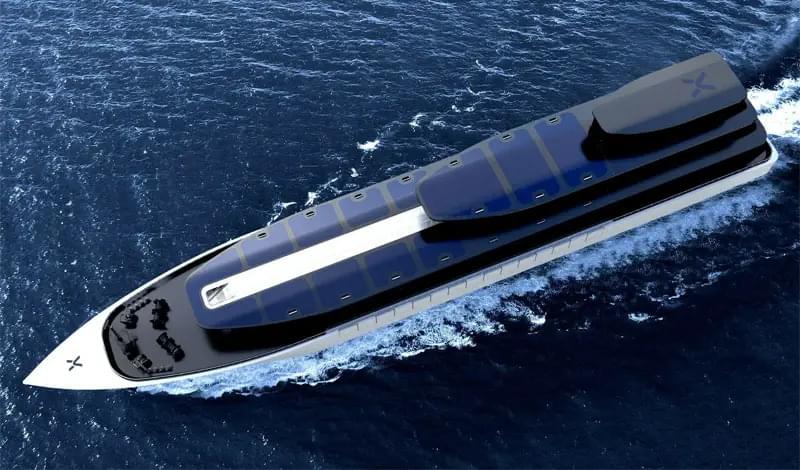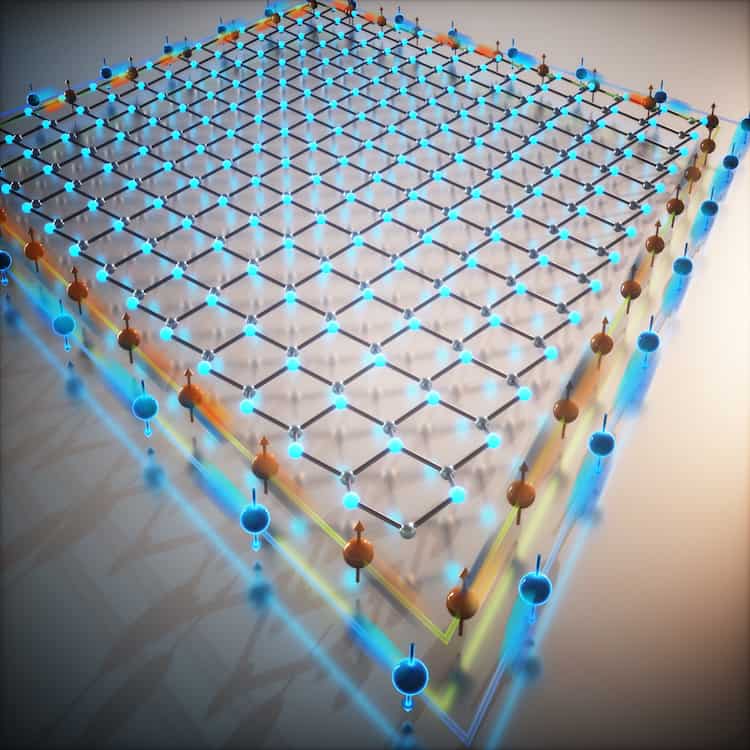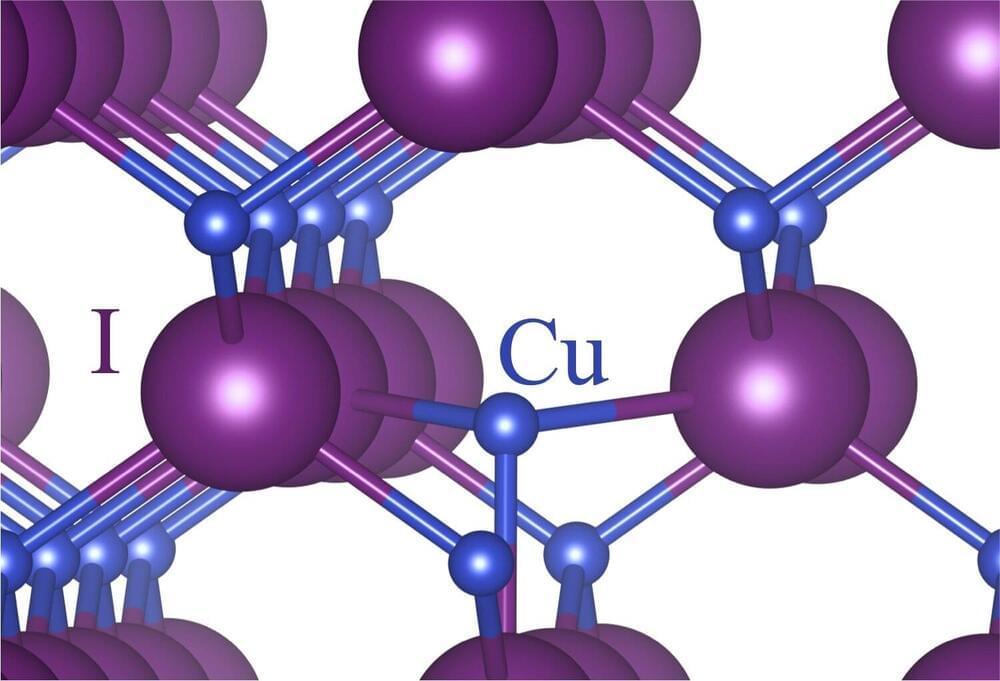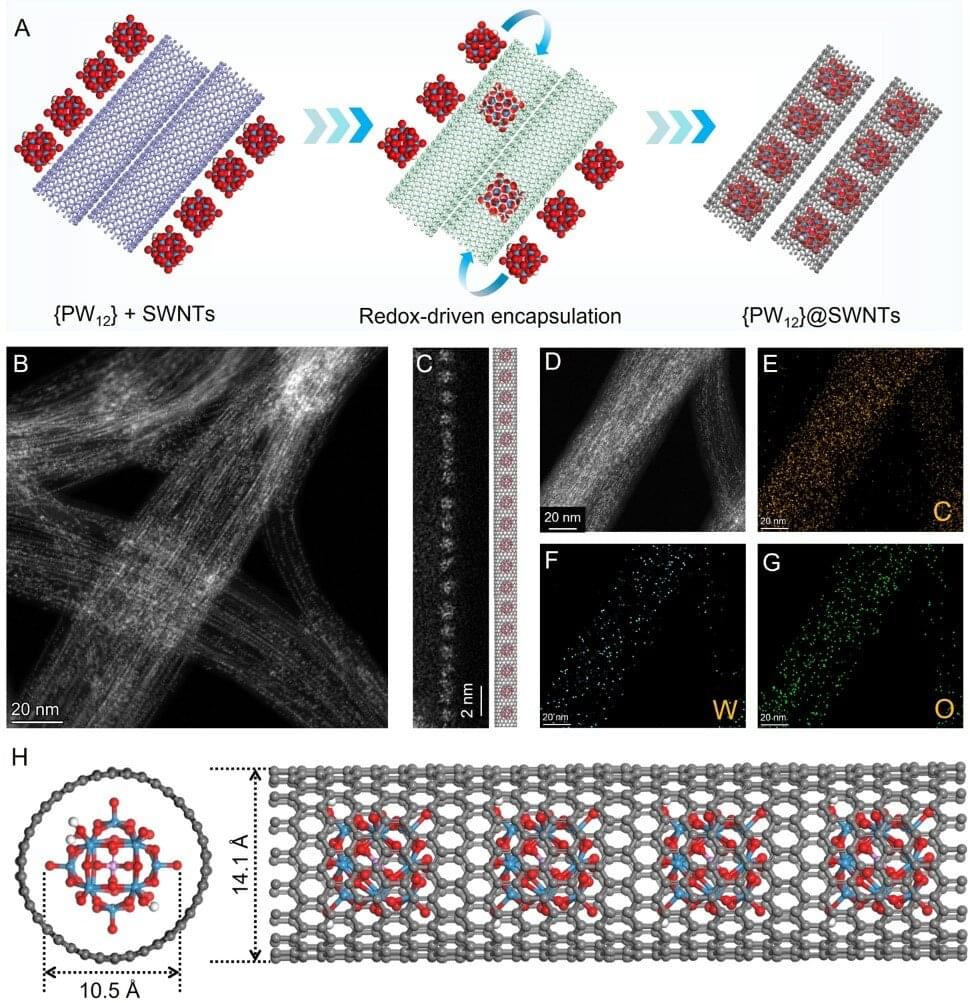Researchers have developed a “sandwich-like” membrane that removes pollutants while generating power.
Archive for the ‘energy’ category: Page 86
Jun 17, 2023
A Tree Grows Right Through the Roof of This Radically Updated Eichler
Posted by Shubham Ghosh Roy in category: energy
A power couple in the tech world tap Ryan Leidner Architecture to create the home of their dreams—with barely a gadget in sight.
Jun 14, 2023
Math You Can Wear: Fibonacci Spiral LED Badge
Posted by Shubham Ghosh Roy in categories: energy, mathematics, space

Fibonacci numbers are seen in the natural structures of various plants, such as the florets in sunflower heads, areoles on cacti stems, and scales in pine cones. [HackerBox] has developed a Fibonacci Spiral LED Badge to bring this natural phenomenon to your electronics.
To position each of the 64 addressable LEDs within the PCB layout, [HackerBox] computed the polar (r,θ) coordinates in a spreadsheet according to the Vogel model and then converted them to rectangular (x, y) coordinates. A little more math translates the points “off origin” into the center of the PCB space and scale them out to keep the first two 5 mm LEDs from overlapping. Finally, the LED coordinates were pasted into the KiCad PCB design file.
Continue reading “Math You Can Wear: Fibonacci Spiral LED Badge” »
Jun 14, 2023
Graphene’s ‘cousin’ makes a switchable topological insulator
Posted by Jose Ruben Rodriguez Fuentes in categories: energy, materials
Germanene – a two-dimensional, graphene-like form of the element germanium – can carry electricity along its edges with no resistance. This unusual behaviour is characteristic of materials known as topological insulators, and the researchers who observed it say the phenomenon could be used to make faster and more energy-efficient electronic devices.
Like graphene, germanene is an atomically thin material with a honeycomb structure. Like graphene, germanene’s electronic band structure contains a point at which the valence and conduction bands meet. At this meeting point, spin-orbit coupling creates a narrow gap between the bands within the material’s bulk, causing it to act as an insulator. Along the material’s edges, however, special topological states arise that bridge this gap and allow electrons to flow unhindered.
\r \r
Jun 14, 2023
Electric Propulsion Breakthrough Produces Motor that Could Help to Revolutionize Green Aviation
Posted by Genevieve Klien in categories: energy, transportation
Engineers at MIT say they have developed a new motor that could be used to electrify large aircraft, significantly reducing their carbon footprint with the help of innovative new electric propulsion technology.
The 1-megawatt motor has already undergone design and testing of its primary components, which the MIT team says helps demonstrate that its power generation is comparable to current small aircraft engines.
Every year, pollution from carbon dioxide in excess of 850 million tons is produced by the aviation industry. If left unmitigated, those levels could increase by as much as three times by mid-century, concerns that have prompted caps on the carbon dioxide emissions of international flights that have been instituted in recent years.
Jun 13, 2023
Heat transport in energy materials: Study clarifies fundamental microscopic mechanisms
Posted by Paul Battista in categories: energy, sustainability
The NOMAD Laboratory researchers have recently shed light on fundamental microscopic mechanisms that can help with tailoring materials for heat insulation. This development advances the ongoing efforts to enhance energy efficiency and sustainability.
The role of heat transport is crucial in various scientific and industrial applications, such as catalysis, turbine technologies, and thermoelectric heat converters that convert waste heat into electricity.
Particularly in the context of energy conservation and the development of sustainable technologies, materials with high thermal insulation capabilities are of utmost importance. These materials make it possible to retain and utilize heat that would otherwise go to waste. Therefore, improving the design of highly insulating materials is a key research objective in enabling more energy-efficient applications.
Jun 12, 2023
Harnessing Quantum Physics: New Visualization Technique Gives Insight Into Photosynthesis
Posted by Jose Ruben Rodriguez Fuentes in categories: energy, food, mapping, quantum physics, sustainability
Photosynthesis. The maps elucidate the complex energy transfer process in photosynthesizing bacteria, providing a clear picture of how sunlight energy is channeled from the outer to the inner molecular ring of the light-harvesting complex.
Systems obeying quantum mechanics are notoriously difficult to visualize, but researchers at the University of Illinois Urbana-Champaign have developed an illustration technique that displays quantum features in an easy-to-read diagram called a coherence map. The researchers used these maps to study the quantum mechanisms that underlay photosynthesis, the process by which plants and some bacteria use sunlight to convert carbon dioxide and water into food.
Jun 12, 2023
World’s first ‘battery tanker’ to debut in 2026
Posted by Will Fox in categories: energy, futurism

Japanese company PowerX has unveiled the detailed design of the first-ever “Battery Tanker” at the Bariship International Maritime Exhibition held in Imabari City, Ehime Prefecture, Japan.
For over a century, oil tankers have been a familiar sight on international shipping routes, delivering vital energy sources to power our civilisation. But as the world shifts away from fossil fuels, they could soon be joined by new and futuristic-looking vessels bringing cleaner forms of energy.
Jun 10, 2023
Confinement effects of carbon nanotubes on polyoxometalate clusters enhance electrochemical energy storage
Posted by Dan Breeden in categories: chemistry, energy, nanotechnology
Carbon nanotubes (CNTs) are considered ideal electrochemical energy storage materials due to their high electrical conductivity, large theoretical surface area, and good chemical stability.
However, CNTs tend to aggregate due to strong van der Waals forces, which reduces their electrochemically active area. This problem is even worse for single-walled carbon nanotubes (SWNTs) due to their high length-to-diameter ratio.
Recently, a joint research team led by Dr. Wang Xiao from the Shenzhen Institute of Advanced Technology (SIAT) of the Chinese Academy of Sciences, Dr. Zhu Sheng from Shanxi University, and Prof. Li Yan from Peking University has encapsulated polyoxometalate guest molecules within SWNTs (with a diameter of approximately 1.4 nm) to enhance the electrochemical energy storage of CNTs.
Jun 9, 2023
China’s BYD announces new Fang Cheng Bao brand of energy vehicles
Posted by Shailesh Prasad in categories: energy, sustainability, transportation
BEIJING, June 9 (Reuters) — BYD announced on Friday a new brand of electric vehicles (EV) ranging from off-road to sports cars as the company looks to meet more diversified consumer demand.
The new brand is called Fang Cheng Bao, which translates from Chinese literally as “Formula” and “Leopard”. The Chinese EV giant is expected to launch the first model this year — an SUV identified for now internally as SF, BYD said in a statement.
BYD, with its Dynasty and Ocean series of pure electric and plug-in hybrid models mostly priced under 300,000 yuan ($42,140.16), has been out selling Volkswagen-branded cars in China since November.















